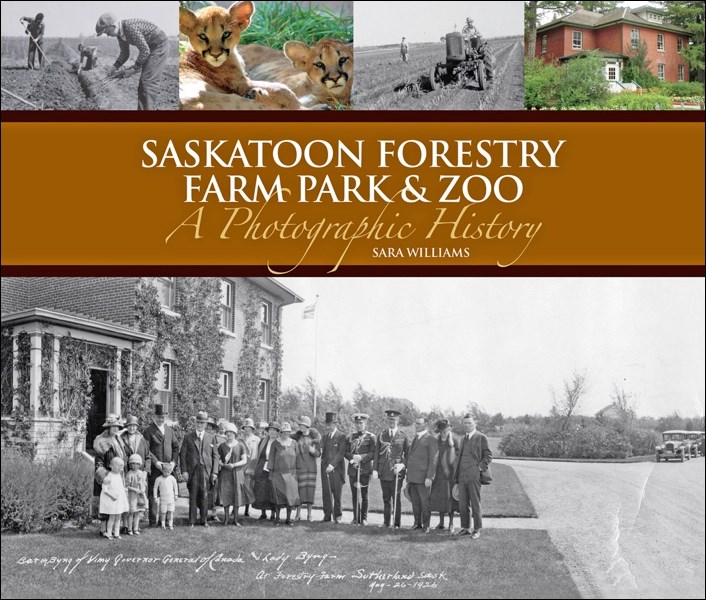Take a walk through the Saskatoon Forestry Farm Park and follow in the footsteps of James McLean, John Whiteman, Les Kerr and Kate Husky who lived and worked there when it was the Sutherland Forest Nursery Station.
The nursery began in 1913, and during its 50 some years of existence, distributed free trees to prairie farmers for field shelterbelts and homesteads. The central parking area, its surrounding buildings and grounds, would have been a hive of activity, especially in fall when tree seedlings were heeled in for the winter.
In spring, there was planting and the shipment of seedlings for distribution to farmers. Horses and carts loaded with bundled trees would regularly make trips between the Sutherland Nursery Station and the CP rail yard. There, the carts would await the arrival of trains to transport the seedlings to their destinations in the northern half of Saskatchewan, Manitoba and sometimes as far away as the interior of British Columbia. In spring and fall, the carts were used to transport field workers from Sutherland to the nursery in the morning and home each evening.
One can only imagine the work involved in tending to nine million seedlings throughout the growing season in order to ship three to four million trees each year. This large number of seedlings was necessary to compensate for losses due to less than ideal growing conditions. There could be dust storms in spring and during dry years many seedlings would suffer because water supplies ran low. As well, some trees needed to remain in the nursery for up to three years until they were mature enough for shipment. Seedlings were lost due to rodent damage or breakage through frequent handling, especially in the heeling-in beds where they were stored for winter.
Aside from propagation and research fields, the site was a demonstration landscape that showed visitors, especially farmers, how trees could beautify their landscape and which plants were adapted to our harsh prairie environment. The area around the superintendent's residence was laid out in the English Landscape style and showcased many of the trees available for distribution. In keeping with this tradition, the City of Saskatoon planted Ohio buckeyes in the central area in the late 1960s after the park was acquired from Agriculture Canada. In 2013, a Ventura maple was planted near the wedding garden to commemorate the park's 100th anniversary.
When the nursery closed in 1965, it had produced and shipped more than 147 million trees. In 1966, 58 hectares of the Sutherland Forest Nursery were sold to the City of Saskatoon for $1 with the stipulation that it be used as a city park and for recreation, not for other development.
So as not to lose this history, in 2014, the Friends of the Forestry Farm House published the Saskatoon Forestry Farm Park & Zoo, A Photographic History, by Sara Williams. Full of fascinating archival photographs, it begins with the bald prairie of the original site, traces the working life of the nursery, the development of the zoo, tells the story of George the lion (who sprayed backwards to the dismay of many visitors) through the park as it is today. The book ($20) is available from McNally Robinson, the University Book Store or from the Friends of the Forestry Farm House 306-373-1787.
On Sunday, May 27 the Friends will unveil their new interpretive display at the superintendent's residence. Tea and refreshments will be served from 1:30 to 4 p.m. Sara Williams will be signing her book. A walking tour of the historic area of the park, including the two gardens maintained by the Saskatchewan Perennial Society (zoo not included), will leave from the residence at 2 p.m. These events are free and all are welcome. For more information about this and other events visit: www.fffh.ca.
Bernadette Vangool is a long-time member of the Saskatchewan Perennial Society.
This column is provided courtesy of the Saskatchewan Perennial Society (SPS; saskperennial@hotmail.com ). Check our website (www.saskperennial.ca) or Facebook page (www.facebook.com/saskperennial) for a list of upcoming gardening events.
May 25, 9 to 11 a.m. - Labour & Learn: Learn while helping to maintain two public SPS gardens at the Saskatoon Forestry Farm Park.



